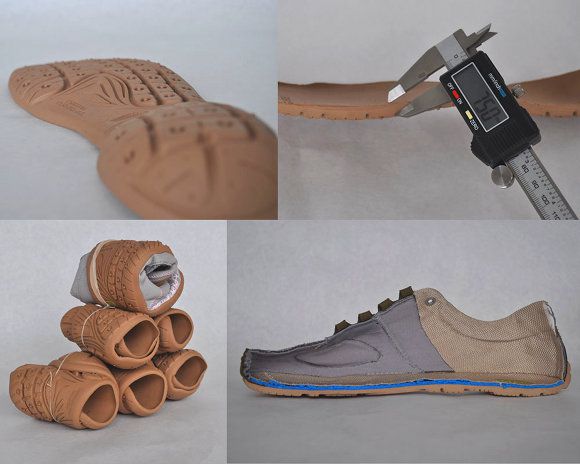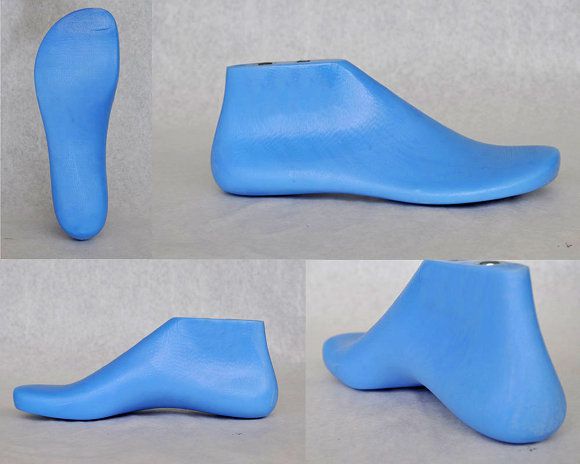Andrew Rademacher is the CEO and chief product developer for Lems, a new barefoot/minimalist footwear company that released their first products to the market in the second half of 2011. If you haven't read it yet, Andrew has a fascinating story (which is basically a minimalist footwear testimonial) about how his company was started. I thought it might be fun to ask him a few questions...
There seems to be considerable debate going on regarding what to call these "barefoot-like" shoes. Barefooters don't like using the word "barefoot" to describe a shoe, since as soon as you put something on your foot it is not longer barefoot. I totally get where they are coming from. At the same time, other terms like "minimalist", "primal", or "natural" may leave newcomers scratching their heads without further explanation. If you say "barefoot shoes" to someone, they immediately get a picture of what it is you are talking about. Do you have any thoughts on this debate?
I have heard this debate come up time and time again. Let me say, even before I started a shoe company, I was barefoot running and had a dislike for traditional shoes. So I understand where barefooters are coming from when they have a distaste for the way shoe companies are using the word "barefoot", especially the shoe companies that don't understand the first thing about it. I agree with you, "barefoot shoe" is an oxymoron, however we can all be happy that the shoe industry is shifting, and more barefoot-friendly shoes are becoming available. It cannot be denied that, the term "barefoot shoe" is the shortest, and fastest way to describe our shoes to newcomers that don't understand yet. To me a "minimalist" shoe is one that is lightweight and has a flat sole, but what many are missing is the wide toebox to fit the natural shape of the foot. A "barefoot" shoe is everything that a minimalist shoe is plus it has the wide toebox.
Assuming barefoot is best (hopefully we all agree on that!), being the owner of a footwear company what do you see as the role or purpose for footwear?
Practicality. Online we all like to discuss theory and ideals, however, we must not forget that we live in reality, so footwear serves a purpose. Yes, being barefoot is better, and personally I take advantage of most opportunities to go barefoot. I encourage our customers to take off their shoes frequently. And it's rare to find an employee of a shoe company that prefers being barefoot over wearing their own product. lol. No matter how ideal the shoe is, being barefoot will always be better. However, let me name a few situations where footwear is somewhat necessary: in the corporate office so that you can be taken as a professional, in class so that your classmates take you seriously, in the street so that you are not interrupted frequently about missing your shoes, in wet weather so that your pants can stay dry, and in the snow so that you can stay warm and comfortable.
Modern footwear tries to market itself as being high-tech and adds all kinds of techy gimmicks purported to increase support, stability, performance, etc. As minimalist footwear geeks, we shun all that garbage. What do you see as the role of technology in minimalist footwear?
Technology is necessary to make sole materials more flexible, lighter, and with better ground feel. And to make uppers softer against the skin, more breathable, and to resist funk. Personally I try to avoid using made-up words, however we need to explain the distinguishing features so that customers understand what they are getting. Currently, I have a few technology ideas for our next shoe in order to make a sole that delivers better ground feel while remaining comfortable. There are many opportunities with technology that already exists, someone needs to be the first. As a new company with no reputation for traditional footwear, we are open to trying something new.

Do you see any limitations in the industry (process, technology, etc.) that you think might be preventing minimalist shoe designers from making the perfect shoe? Does some innovation need to happen somewhere to take things up a notch?
Coming from someone that got to learn the whole shoemaking process, there are no limitations for new shoe companies. Limitations exist for large shoe companies. Many great ideas get shot down for being too risky. You'll hear "that's never been done before so it won't work." Large shoe companies have many things limiting them. The idea might be there but it has to pass through so many levels first. It first goes through the shoe designer, and then the marketing team, and then the financial analysts, and then upper execs, and then the board of directors. If the idea can make it through all those levels of decision-makers it comes out completely different than it started. The originality of the idea gets more and more diluted. With our small shoe company the idea only has to pass through one person, me. We are not afraid to try something that's never been done before.
What characteristics are important, in your mind, for an ideal minimalist shoe? Obviously the world isn't perfect and sometimes we have to make compromises. Under what conditions are you willing to compromise on those characteristics?
In the simplest form, three things make up an ideal minimalist shoe: 1) Flat sole, 2) Flexible sole, 3) Extra-wide Toebox. All of our shoes will always meet those three criteria. We call it our Core Principles. We will never compromise on those three things. Flexibility has many degrees of interpretation. Our interpretation is that in order to be considered flexible it must flex with no effort at all. Merely the force of gravity should flex it and it must flex in all directions. It can be rolled up and rolled back with no effort.
The things that require some compromise: breathability is compromised for water-resistance, unstructurenesss of the upper is compromised for durability of the upper, and light weight is sometimes compromised for durability of the sole.
I have really wide feet, my wife has really narrow feet. Everyone's foot is a different shape, how do you take that into consideration when designing a shoe?
We design shoes to fit the wider foot better. No company has filled the need for wider feet, so it's the wider feet that are often deformed by poorly shaped shoes. People with narrow feet can wear our shoes, but it's a more relaxed fit for them. In the future we may offer several widths but when the shoe is shaped to the natural shape of the human foot it fits many foot types better from the get go.
I imagine that one of the biggest decisions that a minimalist shoe company has to make is the shape of the last. When you are first starting out, I imagine a lot of work goes into getting this dialed-in before having molds for the soles made, etc. It is basically the foundation of the shoe, is it not? What was the process you went through to design your last?
Right, the shape of the last sets the pace for about 90% of the shoe. For those that are not familiar with a Last, it is the model of the foot that they use to build a shoe around. It doesn't get sold with the shoe. It is slipped into the shoe during the whole shoemaking process and then slipped out before the shoes are put in the box. Lasts used to be made out of wood, but now they are made out of plastic. Our Last is one of a kind. It has the widest toebox of any shoe on the market. And it is the most human foot shaped. You can get an understanding of the shape of the last by taking out the insole (if your shoe has one). Take out the insole, step on it, and spread your toes apart, and your foot should not hang over the edges of it. Getting our last right was a very important step and to this day, no other shoe company has one quite like ours. Shoe companies continue to shape their Lasts to traditional standards. It's just something that has been done for decades. When designing our Last we started with a foot shape and when revising it, I inched the toebox wider and wider. They didn't believe it could be done, so we proved it could.

When you set out to start your company Lems Shoes (formerly Stem Footwear), what was the biggest "surprise" to the whole process that you hadn't anticipated going-in?
Hmm. It's so fulfilling that it all came together. I never had the feeling that it was true that I can start a shoe company until we starting selling our shoes online. I worked on this for over 2 years before our shoes hit the market, and it seemed like it was never real until people starting buying them. On September 15 we went live selling online. In the first hour we sold 30 pairs, in 12 hours we sold 100 pairs, and in 24 hours we sold 180 pairs! It was so exciting to watch. And it took a long time to believe it was happening.
I am sure you get lots of stories from people about people using your shoes in interesting and unexpected situations. Do you have any cool and unconventional/inspirational applications that you can share with us?
Tennis surprised me the most. We had 3 customers in the first month tell us that they were using them for tennis and that they loved them for it. Another surprising one is skateboarding. In the future we may design a more tennis and skateboard appropriate shoe, but it surprises me that people already use it for that.
Are there any exciting things that we can be expecting from Lems in the not-too-distant future that you can tell us about?
On March 1 the ALL BLACK Primal Origins comes out! People can use it in the working environment. And as a former Starbucks Barista, it is Starbucks worker approved.
In Winter 2012 we will introduce a waterproof shoe so stay tuned for more information in a few months.
